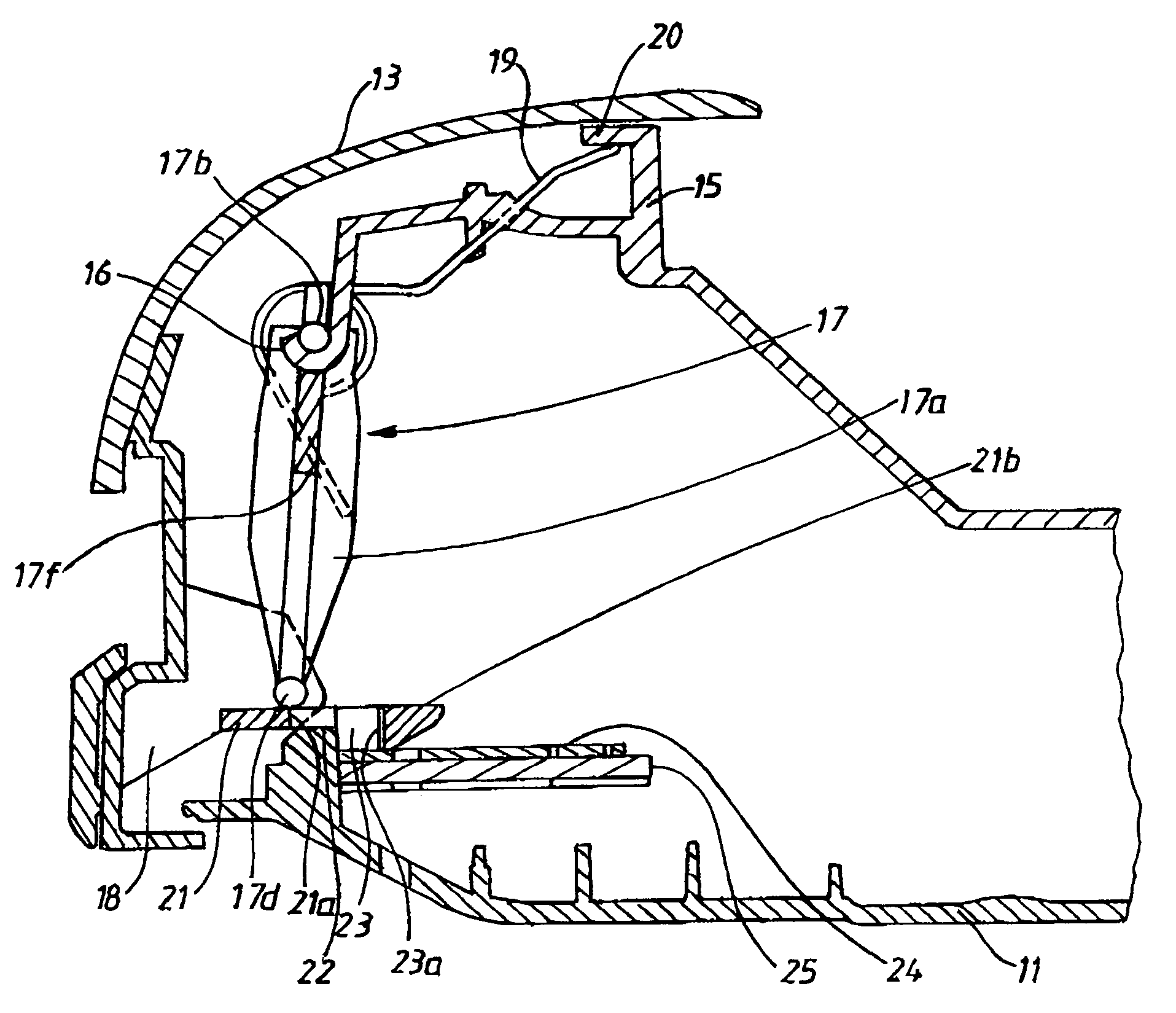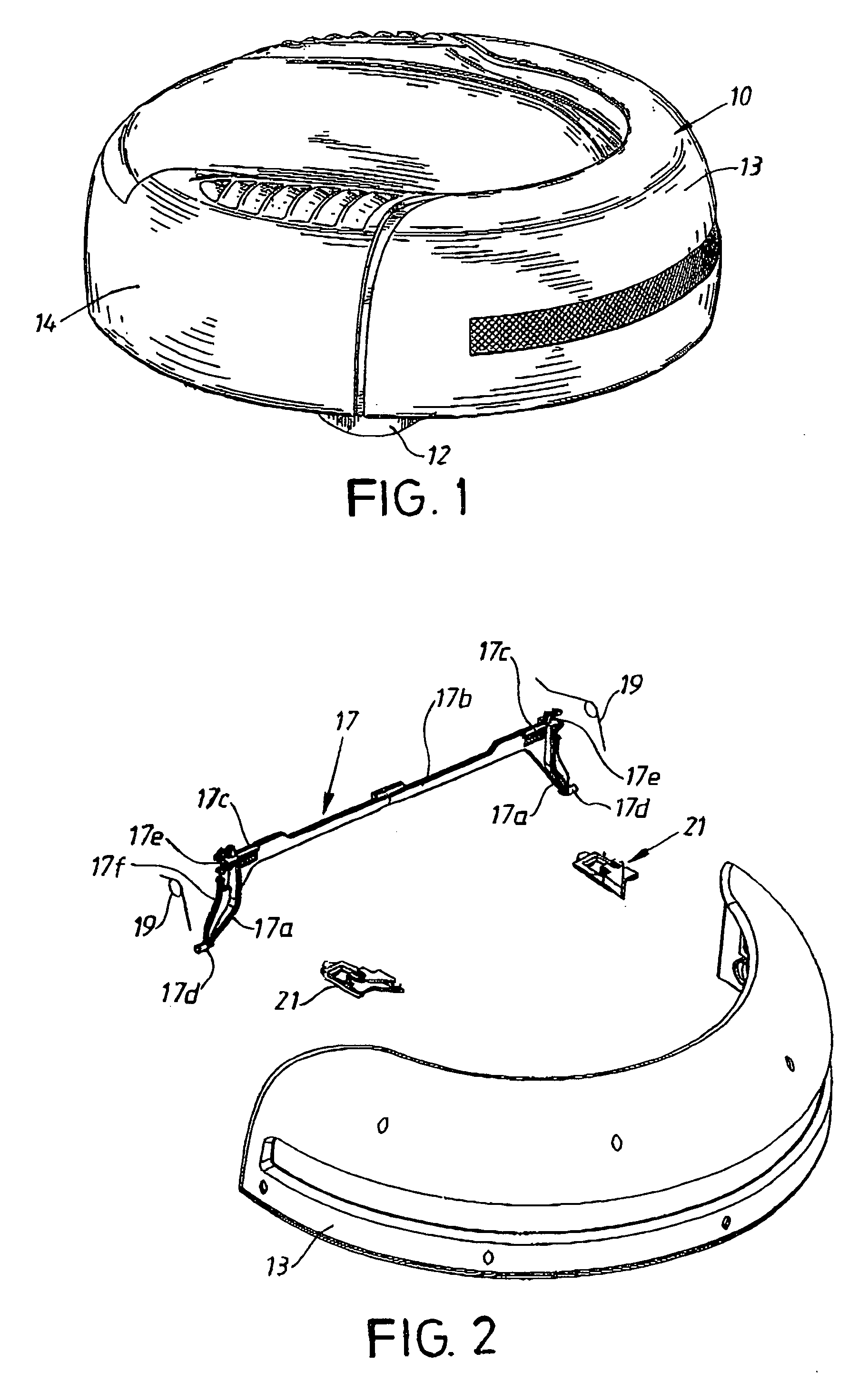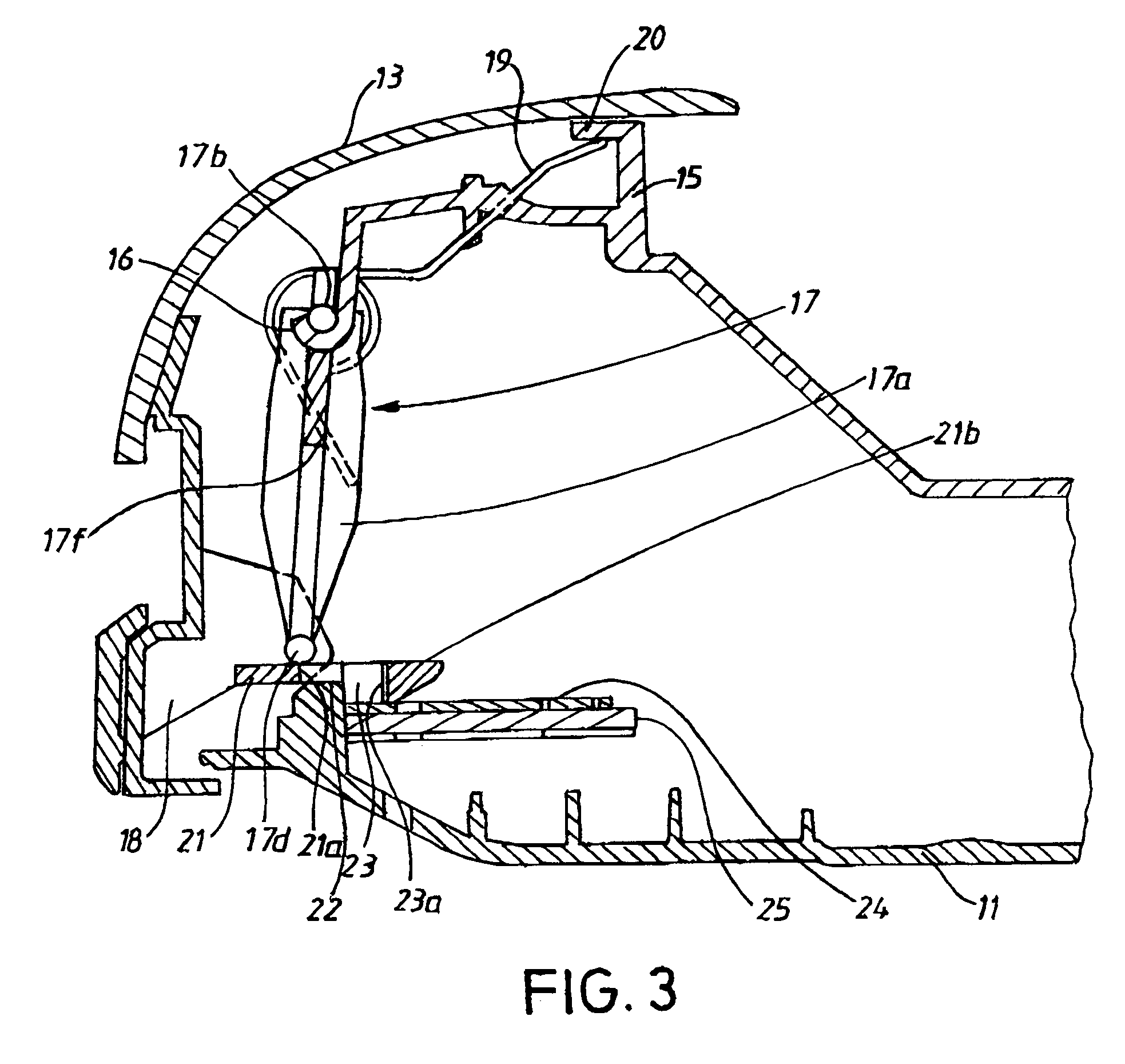Obstacle sensing system for an autonomous cleaning apparatus
a technology of obstruction sensing and cleaning apparatus, which is applied in the direction of distance measurement, process and machine control, instruments, etc., can solve the problem that obstructions cannot be avoided in all instances
- Summary
- Abstract
- Description
- Claims
- Application Information
AI Technical Summary
Benefits of technology
Problems solved by technology
Method used
Image
Examples
Embodiment Construction
[0014]A carrier, in the form of an autonomous robot vacuum cleaner, is shown in FIG. 1, where the device would move to the right when moving in a forward direction. The robot vacuum cleaner comprises a chassis with a housing 10 and a bottom plate 11. The vacuum cleaner is guided and driven by motive means comprising two wheels 12 which, typically, are individually driven and arranged at each side of the housing. The housing will typically enclose and carry a self-contained power source such as a battery or set of batteries and a pair of electric motors, not shown. The motors drive the wheels 12, with each motor driving a different wheel for example. Alternatively, a single motor might drive both drive wheels. The drive motor(s), or an additional dedicated motor, is used to drive a vacuum source or fan unit and a brush roll arranged in a nozzle (also not shown) directed towards the floor surface, to provide a vacuuming and sweeping function. The nozzle is connected to the vacuum sour...
PUM
 Login to View More
Login to View More Abstract
Description
Claims
Application Information
 Login to View More
Login to View More - R&D
- Intellectual Property
- Life Sciences
- Materials
- Tech Scout
- Unparalleled Data Quality
- Higher Quality Content
- 60% Fewer Hallucinations
Browse by: Latest US Patents, China's latest patents, Technical Efficacy Thesaurus, Application Domain, Technology Topic, Popular Technical Reports.
© 2025 PatSnap. All rights reserved.Legal|Privacy policy|Modern Slavery Act Transparency Statement|Sitemap|About US| Contact US: help@patsnap.com



